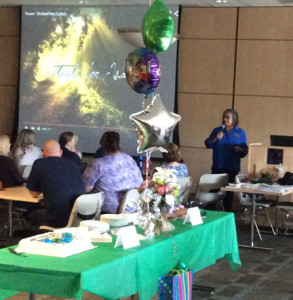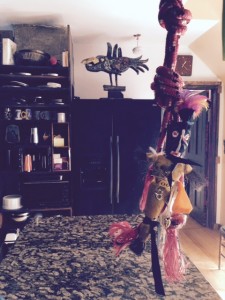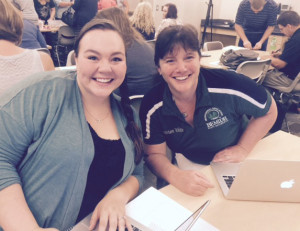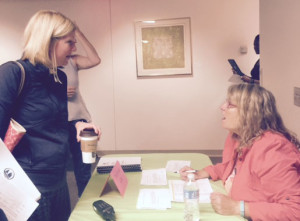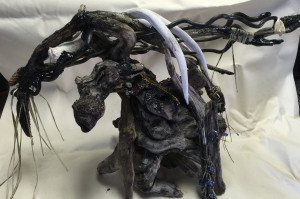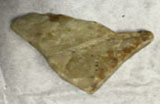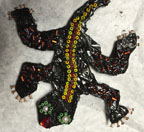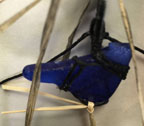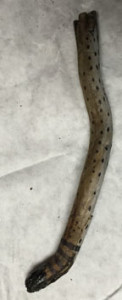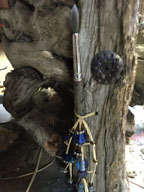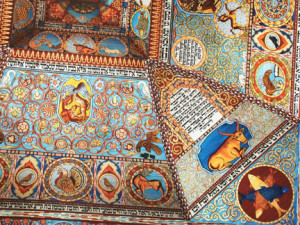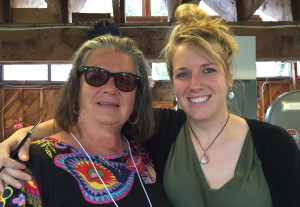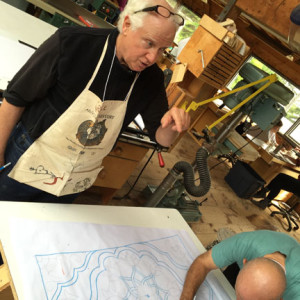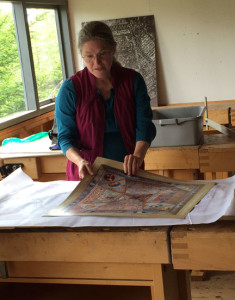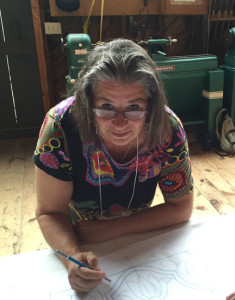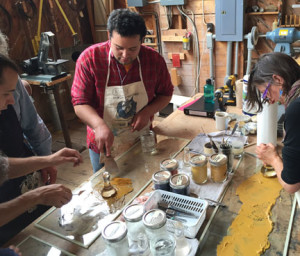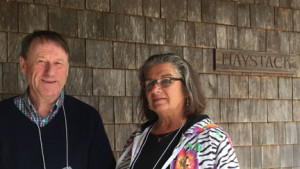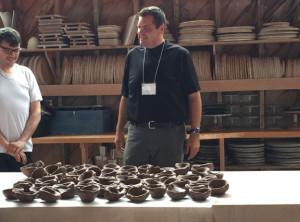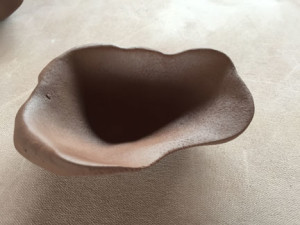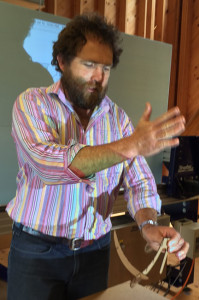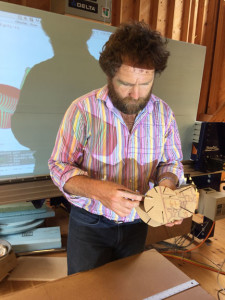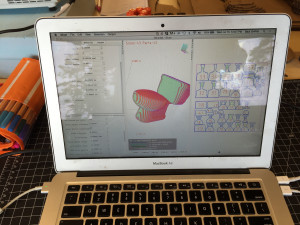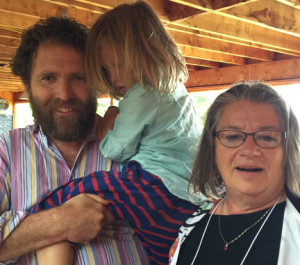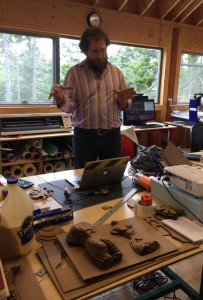After a three day dash back to Minnesota from Maine, I arrived at Anoka Ramsey to start my last academic semester at Bemidji State University. The PEDL team has built the program back up to 250+ and a dozen professors. When we all come together at the Face to Face three times a year it feels like the most energizing of conferences with 250 of your friends!
I saw two cakes on the table and I thought it must be someone’s birthday-until I read the messages. One said, “Well Behaved Women Rarely Make History”. Bemidji DID make history with the first teacher licensure program in the nation. We have trained over 5000 people to stand in front of a classroom in a very different way. When Pat Rogers (now provost of Winona State U) first called me and suggested we go online- I gave her the two fingers crossed hex sign. “I could never train teachers online”, I protested! How wrong I was. I know my students twice as well “in the air” as I ever did “on the ground”. I am really so very proud of what BSU has built with our PEDL program. http://www.bemidjistate.edu/academics/departments/professional-education/dlite/
VIPs said kind words. I was touched. Department Chair, Tim Goodwin, reported he was flattered that I had called and urged him to serve as department chair. We needed him and he has been wonderful. Dean Troy Gilbertson mentioned our long history together when he was the union president. He gave me a ceramic flower vase he had created. Cops make art! How great is that!? The Prof Ed department presented me with a lovely BSU jacket. My mentor, former dean and now Provost/Vice President, Martin Tadlock named, OUTLOUD, the personal and professional cost of building an online teacher licensure programback in 2002. His perfect gift to me- a VOODOO doll! I could have definitely used that a decade ago!! ;/00000.
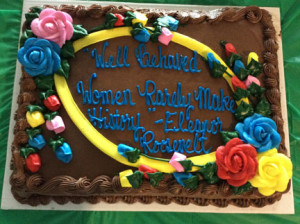
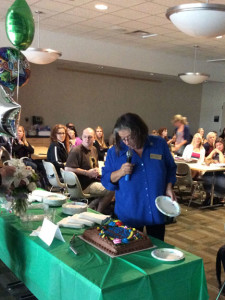
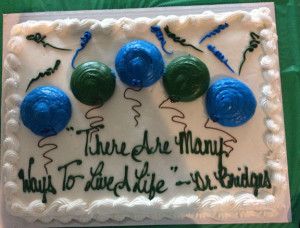 Mirlande Erickson, PEDL program manager, brought us YUMMY cakes. The message on the second cake was “There Are All Kinds of Ways to Live a Life”. I have had a challenging life and I say this phrase often to myself and to others. It is the foundation of all the courses I teach and how I try to live. Your truth is A truth, not THE truth.
Mirlande Erickson, PEDL program manager, brought us YUMMY cakes. The message on the second cake was “There Are All Kinds of Ways to Live a Life”. I have had a challenging life and I say this phrase often to myself and to others. It is the foundation of all the courses I teach and how I try to live. Your truth is A truth, not THE truth.
Sally Gibson and Diane Aldis celebrated with me at Erte and Loring Pasta with Orangtinis! Lisa Krall gave me a wonderful reflection party game!! Mim, a BSU colleague, was there with her daughter. We are into 2nd and 3rd generations! We made a difference!
NAte Brager confirms it:
I’d like to take the opportunity to sincerely thank you, not just for the things you’ve taught me in class but for the work you’ve done in creating this entire program. For those of us who are non-traditional students, the opportunity for advancement can be elusive. Politicians and others often tell us to better ourselves, but few people have been able to offer real opportunities to do that. You are the exception. Read more: Nate confirms it.
PEDL Coordinator, Kris Nei, responsible for building the program back to its full potential and I suspect organizing my lovely tribute, played Perry’s Oh Pioneer https://www.youtube.com/watch?v=08oDQMr08TA and gave me the most soulful gift of all. She asked the audience to raise their hands if they could NOT have pursued a teaching license if not for the PEDL program. I saw a room full of two hundred people raise their hands. It made me cry. I am confident my baby will grow in wonderful innovative ways I cannot yet imagine. Join our FaceBook and enjoy the ride! https://www.facebook.com/bsupedlprogram
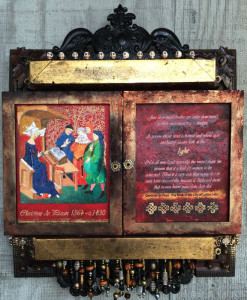
Three Waves 2015 Mixed Media: Re-cycled frames, original paintings and prints, collage, papier-mâché, beads, 24” X 18” X 4”.
What is my next chapter? I have art works being shown at a Smithsonian affiliate and Chicago (Take To The Air http://bridgescreate.com/artwork/take-to-the-air/), an International collaborative project in Guatamala, San Salvador, New York (Nosotros http://bridgescreate.com/nosotros-us ) and maybe Minneapolis, a Minneapolis Institute of Art/MCAD Guerrilla Girls Exhibition (Three Waves) and one of my proudest summer achievements installed in Sandy Point, Maine (LOVE http://bridgescreate.com/artwork/love/).
Join me for workshops at my Minneapolis studio and in Maine in 2016 (http://bridgescreate.com/education/workshops/).
Friend me on FaceBook! https://www.facebook.com/barbara.bridgesrogers
